Prepare, Pause, and Frame
Get ready to focus and respectfully absorb as you prepare to develop a deep understanding of a source. Initiate connection and spark curiosity.
What You’ll Learn:
- Why engage actively
- How to prepare
- Why pause judgment
- How to quick check
Consider this: According to Internet Live Stats (2020), a site that tracks internet activity, in an average second:
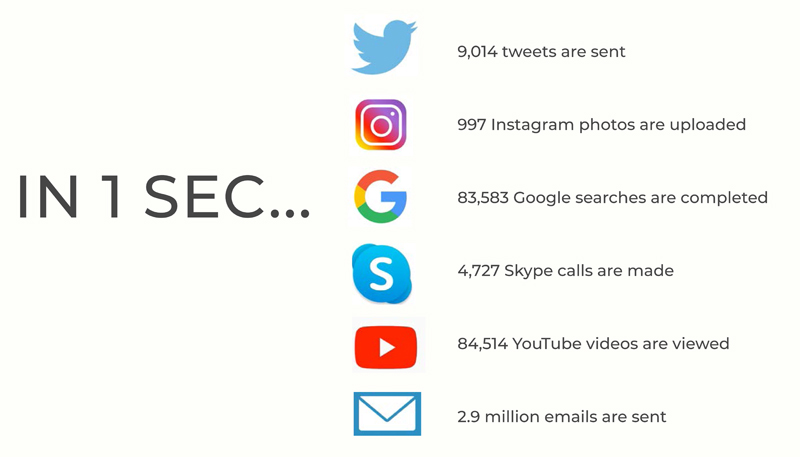
Think about this: How does this volume of information impact our ability to focus, pay attention, and engage with a source long enough to get a deep understanding of it?
Engage Actively
Engaging actively with a source requires focus and attention. It involves creating space in your mind and your day to dive deeply into a source’s content and its message. It requires exploring the message’s nuances, creating connections to what you already know, and appreciating its context.
Passive and active engagement with a source look different. Active engagement takes time and effort, while passive engagement is faster and less focused. As professionals and students, it will be important to decide when active engagement is required.
How Are Active and Passive Engagement Different?
| ACTIVE ENGAGEMENT | PASSIVE ENGAGEMENT |
|---|---|
| Explore the context for the source. | Ignore the context. |
| Examine the purpose. | Engage without purpose. |
| Alter your speed based on the significance and difficulty of the source. | Use the same speed for all sources. |
| Preview before engaging. | Don’t preview; just jump right in. |
| Engage with questions in mind. | Engage without questions in mind. |
| Stop to monitor your understanding. | Don’t stop to think about whether you are understanding. |
| Annotate if reading; read with a pencil or highlighter in hand to mark important passages and jot down notes. | Don’t annotate. Don’t have anything in hand. |
| Make time to reflect upon and evaluate the source. | Don’t make time to reflect upon and evaluate the source. |
Prepare
This first step of engaging actively is about knowing yourself as a reader and finding a space that works for you, away from distractions. If possible, this space should also be a comfortable working environment. Physical discomfort can also interfere with your ability to focus.
For example, you might know that if you sit in a common area, you will be distracted by your roommates and their actions, getting side-tracked and involved in their activities rather than focusing on the source. Or having your phone at your fingertips with alerts buzzing and beeping will lure you onto social media and its enticing diversions.
Along with finding a good physical space, you should also give some thought to the time of day, and your fatigue and energy levels. You probably have a window of time in the day that is most productive for you. Perhaps it’s first thing in the morning when you’re the only one up and your place is quiet. Find that time and use it for tasks that require focus and attention. Put away distractions and set a timer; be prepared to focus for a planned amount of time.

According to an article titled “8 Ways to Improve Your Focus” on fastcompany.com, “If it’s too hot or too cool in your work environment, it could impact your focus. A study from Cornell University found that workers are most productive and make fewer errors in an environment that is somewhere between 68 and 77 degrees [20 and 25 degrees Celsius]. Another study from the Helsinki University of Technology in Finland says the magic temperature is 71 degrees [22 degrees Celsius]. If you don’t control the thermostat, you can opt to bring a sweater or a fan” (Vozza, 2015, para. 12).
Pause Judgment

In our polarized world where people have strong positions on many topics, it can be easy to get caught up in offering opinions. You may navigate frequently through social media, posting and commenting, perhaps positively, perhaps negatively, since, in the digital world, opinions flow quickly and easily. The anonymity and protection of a screen contribute to this.
It is important at times, and especially for professional or academic purposes, to pause. Pause so that you can give quiet and respectful consideration to others’ viewpoints. Pause so that you can develop your own considered, evidence-based response that builds from your understanding, finds common ground, and, when relevant, disagrees constructively.
In this first stage of absorbing a source, you should practise pausing. Wait to hear and understand. Later, you will respond, analyze, and critique.
Quick Check
Ok, now that you’re comfortable, ready to focus, and have paused judgment, you should do one more thing before you start to work with a source: a quick check to frame it. This creates context for understanding and further investigation later. Be inquisitive about the source. Learn a little about it—who is the author? When was it written? Where was it published? What can we predict and learn from the title? This is a time when you might be reminded of how much you love your smartphone because all these answers are at your fingertips. Don’t spend too long on this; a quick internet search should be enough.
QUICK CHECK:
“It’s Time for ‘They.’” Read it here.
Publication Name and Details
“It’s Time for ‘They’” was published in The New York Times. If you don’t know anything about The New York Times as a publication, you could take another few moments to learn more. You’ll learn that it’s an American publication. On first glance, does it seem to be a credible source? Why or why not? These are the sorts of questions you might want to consider quickly, but you will return to explore them further later.
Publication Date
“It’s Time for ‘They’” was published in 2019.
Prediction from Title
The title of this article seems fairly clear. You might expect to read about the word “they,” and given the use of “It’s Time for…,” you might predict that the author is expressing a strongly held opinion in this article.
Author Details
You can also do a quick internet search on the author, Farhad Manjoo. You’ll learn that they have been a columnist at The New York Times since 2018. What else? They were born in South Africa and have been a journalist at other publications since 2008.
Publication Name and Details
What do you know about TED Talks and the organization behind them? There is a ton of information about this platform readily available on the internet, but perhaps the best spot to learn more is at https://www.ted.com/about/our-organization. Here you’ll find that “TED is a nonprofit devoted to spreading ideas, usually in the form of short, powerful talks (18 minutes or less). TED began in 1984 as a conference where Technology, Entertainment and Design converged, and today covers almost all topics—from science to business to global issues—in more than 100 languages” (TED, n.d., para. 1).
Publication Date
“The Danger of a Single Story” was published in 2009.
Prediction from Title
What can you predict from this title? By looking at the wording, you may guess that the source is about “single stories” and that the author thinks these are dangerous. You may guess, correctly, that you’ll hear or read about why the author has this perspective.
Author Details
Onto the author. Her name is Chimamanda Ngozi Adichie. She has a website—https://www.chimamanda.com/about-chimamanda—that you can access to learn that she is a novelist who grew up in Nigeria. She has won numerous awards. Her TED Talk is one of the most viewed of all time. (As of June 2020, it had been viewed 22 million times.)
A quick check should take you no more than 3–5 minutes. Don’t spend more time on it. The benefit of framing a source is that you’ve begun your journey of engaging with the source, becoming curious about what you will read, and building respectful understanding.
Try It!
Do Your Own Quick Check
Directions:
- Complete a quick check for “Forgiveness Story” by June Callwood in the table provided. Access “Forgiveness Story” here.
- Compare your quick check to the model.
| Title | |
| Publication Name and Details | |
| Publication Date | |
| Prediction from Title | |
| Author Details |
| Title | Quick Check – “Forgiveness Story” |
| Publication Name and Details | • Published in Canadian magazine The Walrus • “The Walrus provokes new thinking and sparks conversation on matters vital to Canadians. As a registered charity, we publish independent, fact-based journalism, produce national, ideas-focused events, and train emerging professionals in publishing and non-profit management. The Walrus is invested in the idea that a healthy society relies on informed citizens” (The Walrus, n.d.) |
| Publication Date | June 12, 2007 |
| Prediction from Title | • Article that focuses on the topic of forgiveness • Not clear if it’s about the author’s opinion on the topic or has a different focus, but expect to read stories of forgiveness |
| Author Details | • Google search lists numerous sites for details on June Callwood • According to cbc.ca, she was a journalist and activist; she was described as “Canada’s Conscience”; she passed away at the age of 82 in April 2007 after a battle with cancer, two months before the publication of “Forgiveness Story” (CBC, n.d.) |
In this subtopic, you’ve learned the first steps of actively engaging with a source including how to
- prepare to engage with a source;
- pause judgment to allow understanding; and
- quick check a source’s background.
Active vs. passive reading. (n.d.). Excelsior Online Reading Lab. https://owl.excelsior.edu/orc/introduction/active-reading
Adichie, C. N. (2009, July). The danger of a single story [Video]. TED Conferences. https://www.ted.com/talks/chimamanda_ngozi_adichie_the_danger_of_a_single_story?language=en
Adichie, C. N. (2020, May 18). The danger of a single story. LibreTexts. https://human.libretexts.org/Bookshelves/Literature_and_Literacy/Book%3A_88_Open_Essays_-_A_Reader_for_Students_of_Composition_and_Rhetoric_(Wangler_and_Ulrich)/Open_Essays/01%3A_The_Danger_of_a_Single_Story_(Adichie)
Callwood, J. (2007, June 12). Forgiveness story. The Walrus. https://thewalrus.ca/forgiveness-story/
CBC. (n.d.). June Callwood: Canada’s conscience. https://www.cbc.ca/archives/topic/june-callwood-canadas-conscience
Internet Live Stats. (2020, June 17). 1 second. Retrieved June 17, 2020, from https://www.internetlivestats.com/one-second/#tweets-band
Manjoo, F. (2019, July 10). It’s time for ‘they.’ The New York Times. https://www.nytimes.com/2019/07/10/opinion/pronoun-they-gender.html
TED. (n.d.). Our organization. https://www.ted.com/about/our-organization
The Walrus. (n.d.). The Walrus is Canada’s conversation. https://thewalrus.ca/about/
Vozza, S. (2015, August 8). 8 ways to improve your focus. Fast Company. https://www.fastcompany.com/3050123/8-ways-to-improve-your-focus
Skim, Scan, and Use Tools
Get an overview of a source. Find specific content. Proceed to engage closely and focus strategically.
What You’ll Learn:
- How to quick read: skim and scan
- How to use tools to engage closely
Recall what you know: Skimming, scanning, and reading closely are all strategies for engaging with a source. How are they different? Recall what you already know about these strategies by placing the descriptors below in the correct column.
Think about this: Before beginning to engage actively with a source, set a goal. What are you trying to achieve? How much time will you spend? What are the outcomes you are looking for? With this purpose in mind, you can choose how to interact with the source.
Quick Read: Skim and Scan

Skim First
When you skim a source, you go through it quickly so that you begin to grasp its focus, style, and content. The key word here is “quickly.” Remember that a full understanding will come later.
You’ll probably find that you’re adept at looking at content this way; it’s often how we approach the endless stream of media feeds on our devices.
You will engage with countless sources as part of your academic, personal, and professional experience. Your approach to skimming should vary by the type of source, its complexity, its length, and your reason for skimming. Are you skimming before doing a more detailed review of the source? Are you skimming so that you can decide if the source should be used for another purpose—e.g., as support for an argumentative essay you are writing? Are you using skimming to remind yourself of the key parts of a source you read a week ago?
The key is this: Don’t get bogged down when skimming. Focus on only the main points, headings, subheadings, and bolded or highlighted terms. It can be helpful to set a timer to limit how long you spend on this.
Approach to Skimming
Here are three examples of how the time and approach may vary by type of source:
| TYPE OF SOURCE | TIME FOR SKIMMING (approximate) | APPROACH TO SKIMMING |
|---|---|---|
|
Popular: Web Article or Web Page | 1–2 minutes | • Read the title. • Read the first sentences and the last sentences. • Quickly look through the rest of the article to identify keywords and concepts. • Focus on bolded, bulleted, or highlighted content. |
|
Scholarly: Journal Article | 3–4 minutes | • Look at the title, date of publication, and list of authors. • Quickly read the abstract and highlights (if included). • Look at keywords. • Look at headings, subheading, and figures. • Move to the discussion and conclusion, focus in on key findings. |
|
Academic: Textbook Chapter | 5–10 minutes | • Read the chapter title, introduction, and summary. • Look at titles and subtitles. • Focus on figures—charts, tables, images. • Look for definitions. |
Regardless of the source type, the goal of skimming is consistent: You are aiming for a general overview. You should also get a sense of how the source is organized, what the focus is, and keywords or concepts. You may also begin to identify areas that seem most challenging to you as a reader.
Scan with a Purpose
Scanning is also a quick-reading strategy, but when you scan, you’re on a mission. Scanning is not about understanding or absorbing a source as a whole. You are looking for specific content and only that content. You go through the source quickly until you find it, using your time efficiently to achieve your purpose. You could use scanning to
- look up definitions;
- find details such as a client name, technical term, a step in a procedure or experiment;
- search for content to use in a quotation;
- find the answer to a question; or
- locate statistics or data.
Approach to Scanning
- Identify the content you are looking for.
- Scan quickly to find it within the source.
- Stop when you find it.
- Pay close attention to the desired content and the details around it, extracting the required information.
- Move on.
Anatomy and Physiology is an OpenStax book published in 2013. You can access it here.
Approach to Scanning
| APPROACH TO SCANNING | EXAMPLE |
|---|---|
| 1. Identify the content you are looking for. | You have to find the definition of “serous membrane,” an anatomical term. |
| 2. Skim quickly to find it within the source. | You are looking through chapter 1 of Anatomy and Physiology, an open, digital textbook. |
| 3. Stop when you find it. | You find the definition in this part of the source: 1.6. Anatomical Terminology, so you stop here. |
| 4. Pay close attention to the desired content and the details around it, extracting the required information. | You find the definition is this: “A serous membrane (also referred to as a serosa) is one of the thin membranes that cover the walls and organs in the thoracic and abdominopelvic cavities” (OpenStax, 2013, “Anatomical Terminology,” para. 13). You capture the definition and citation details. |
| 5. Move on. | You move on to scan for another definition and, in doing so, repeat this process. |
Engage Actively: Use Tools
To absorb a source, you will need to engage closely with it. This requires slow, focused attention on the whole source, but also on its parts. In this section, we will focus on tools that you can use to help you engage closely before moving on to work with the source in other ways (see Situate; Break Down a Source; Summarize; Paraphrase; Clarify, Respond, and Infer). There are numerous proven approaches and tools that can help you immerse your attention and focus on a source.
Annotate
One tool that can help with engaging actively is annotation.
When you annotate, you add comments, notes, and symbols. You might highlight or underline. You work right on the source, not on a separate screen or piece of paper. This means that the annotations become part of the source; this is the power of annotation.
Annotating has a number of benefits:
- It helps you sustain focus and attention on the source.
- It assists you in making personal connections with the source.
- It reminds you to look further if you encounter content, terms, or ideas in the source that you find challenging or are new to you (e.g. look up the definition of a new word).
- It creates a personalized record of your interaction with a source that you can refer back to at a later date.
- With digital annotation tools, you can collaborate and connect with others as you annotate.
Annotating should be personal in nature; over time, you will develop your own approach to annotating that makes sense. Perhaps you will use colour coding or develop a set of symbols, or a combination of both.

Research on Reading Strategies
Did you know? The effectiveness of reading strategies is supported by research.
As discussed in a study published in Educational Technology & Society, “Many studies have found reading strategies useful when implemented before, during or after reading (e.g., Brown, 2002; Ediger, 2005; Fagan, 2003; McGlinchey & Hixson, 2004; Millis & King, 2001; Sorrell, 1996). For example, reading strategies include rereading, scanning, summarizing, keywords, context clues, question-answer relationships, inferring, thinking aloud, activating prior knowledge, setting a purpose, and drawing conclusions” (Hsieh & Dwyer, 2009, p. 36).
A 2018 study published by TESL Canada Journal also discusses the importance of reading strategies: “Studies have shown that reading improves a reader’s vocabulary, grammar, and reading comprehension, and that using strategies when reading leads to improved reading comprehension (Anderson, 1991; Grabe & Stoller, 2011; Hudson, 2007; Mokhtari & Sheorey, 2008)” (Khatari, 2018, p. 80).
Further, a 2008 study published in Issues in Educational Research comments on the role of reading strategies in cognitive processing: “Successful comprehension does not occur automatically. Rather, successful comprehension depends on directed cognitive effort, referred to as metacognitive processing, which consists of knowledge about and regulation of cognitive processing. During reading, metacognitive processing is expressed through strategies, which are ‘procedural, purposeful, effortful, willful, essential, and facilitative in nature’ and ‘the reader must purposefully or intentionally or willfully invoke strategies’ (Alexander & Jetton, 2000, p. 295), and does so to regulate and enhance learning from text” (Cubukcu, 2008, p. 3).
Here are two examples of annotation systems that could work for you:
| AREA OF SOURCE | COLOUR CODING | LABELS AND SYMBOLS |
|---|---|---|
| Main idea/thesis | Highlight in yellow | Underline |
| New word, important term | Highlight in blue | Circle |
| Key supporting point, statistic, other evidence | Highlight in green | Emphasize with an exclamation mark |
| Challenging or confusing content to be revisited or explored further | Highlight in red | Place a star beside/around content |
| Questions, responses, or commentary you have as you engage with the source | Write beside area of source that sparked the question, response, or commentary; write in the margin or around the content; use physical or digital sticky notes | |

Many sources today are digital. Digital media can be annotated with annotation apps, and, subsequently, the annotation can be saved, printed, and/or shared. Digital annotation can be public and collaborative, allowing for conversations on the text. Comments can be added through voice recordings in some applications. Many digital annotation tools can be used in different ways. Here is a beginning list:
(Note: Authors are not endorsed by these companies, and students should use at their own risk.)
More details on these digital tools can be found here:
- “Annotating Text, Images, and Videos Online” by Stanford University
- “Top Tech for Digital Annotation” by Common Sense Education
Reverse Outlines
You’ve likely used outlines to select, develop, and organize your ideas as part of the writing process. A reverse outline, as its name suggests, works in reverse. You take a published source and produce an outline from it. This can also be an effective first step in summarizing a source.
When creating a reverse outline, it can be helpful to use a table with two columns: one for the location information (e.g. paragraph number), and the other for the summary of that part of the source. When summarizing a paragraph, try to keep it to one to two sentences in length.
Here is an example of a reverse outline of the first segment of “You’ve Got to Find What You Love” by Steve Jobs; it focuses on paragraphs 1 to 9 of the speech.
| LOCATION | SUMMARY |
|---|---|
| para. 1 | honoured to give the speech, will focus on three stories |
| para. 2 | first story: connecting the dots |
| para. 3 | dropped out of college after six months |
| para. 4 | adopted at birth; his birth mother ensured that adoptive parents would send him to college |
| para. 5–6 | went to college but dropped out after six months; was not engaged in his program, started auditing other classes |
| para. 7 | one class he audited, calligraphy, had an impact; he learned about typography |
| para. 8 | years later, used knowledge of typography when designing the Mac; this became the norm for personal computers and would not have happened if he had stayed in original college program |
| para. 9 | connecting the dots between life events can only be done with hindsight, have to trust that there is a purpose to choices |
Other Tools
There are many additional tools that can help you actively engage with a source.
Graphic Organizers: Graphic organizers area visual representation of a concept, an idea, or information. They are used for various purposes and can be as simple as a table or as elaborate as a mind map with many connections. They are particularly effective for visual learners. You can find a description of graphic organizers, as well as templates and examples here.
Journals: Like annotations, journals can be physical or digital. They are useful for developing a permanent archive of ideas, connections, and questions related to sources. They can also be used to capture quotations and specific content such as data or statistics from sources that can be used in your writing. Examples of specific types of journals are provided in the book Reading Reconsidered; the authors, Lemov, Driggs and Woolway (2016), recommend the following journals: double-entry quotation journals, common-place journals, essential question trackers, hypothesis trackers, and theme or motif trackers (pp. 334–335).
Lemov, D., Driggs, C., & Woolway, E. (2016). Reading reconsidered: A practical guide to rigorous literacy instruction. Jossey-Bass & Pfeiffer Imprints, Wiley.
Text-to-Talk: If you are an auditory learner—someone who learns well by listening—your understanding will increase if you listen to a source. This can be used to accompany your reading. You can try out a free, easy-to-use, and versatile text-to-talk online tool called NaturalReader here.
SQ3R: This is a reading strategy that prescribes five steps in the reading process: 1) survey (skim the source); 2) question (identify questions); 3) read (go through the source thoroughly); 4) recite/recall (assess your ability to recite or recall what you have learned); and 5) review (refresh and ensure understanding through review at a later date) (Lumen, n.d., Chapter 12, para. 23–25). You can read more about this strategy here.
Active Reading Documents: This reading strategy involves capturing your understanding of a source and making logical connections between the source and other sources. This can work well for program-related content and assigned textbook readings. Like SQ3R, there are five tasks: 1) create visual representations of information; 2) depict personal understanding with short explanations and/or visual representations; 3) identify and explain logical connections within the reading; 4) identify and explain logical connections to other chapters or units; and 5) identify and explain logical connections to related academic content and to personal, social, or professional aspects of life (Dubas & Toledo, 2015, p. 29). You can read more here.
Self-Explanation Reading Training: Self-Explanation Reading Training (SERT) is “designed to improve students’ ability to generate effective inferences while reading complex text. Self-explanation refers to the process of explaining aloud the meaning of written text to oneself” (McNamara, 2017, p. 480). As the name suggests, when using SERT, you explain a source’s content to yourself, checking on your own understanding as you go. This involves a combination of comprehension monitoring, paraphrasing, elaboration, and using logic, predicting, and inferring (McNamara, 2017, p. 481). You can read more here.
Try It!
Directions:
- Practise creating a reverse outline of section 2 (para. 10–15) of “You’ve Got to Find What You Love” by Steve Jobs. Use the outline template below.
- Compare your reverse outline with the model.
| para. 10 | |
| para. 11 | |
| para. 12 | |
| para. 13 | |
| para. 14 | |
| para. 15 |
| para. 10 | second story: love and loss |
| para. 11 | co-founded and grew Apple to large company in ten years; got fired from Apple at the age of 30 |
| para. 12 | felt distraught, embarrassed that events occurred in public eye, but decided to begin again, still passionate and motivated |
| para. 13 | realized that separation from Apple was liberating, allowed more innovation |
| para. 14 | started NeXT, Pixar, met wife, Apple bought NeXT, went back to work at Apple; innovation from NeXT was instrumental at Apple |
| para. 15 | don’t compromise or give up on vision and goals despite hitting roadblocks; loving what you do will lead to outstanding results |
In this subtopic, you have covered how to
- get a general understanding of a source by skimming;
- find specific content in a source by scanning; and
- use annotation, reverse outlining, and various other tools to engage closely.
Freedman, L. (n.d.). Skimming and scanning. University of Toronto. https://advice.writing.utoronto.ca/researching/skim-and-scan/
GradProSkills. (2017, September 21). Reading strategies: Skimming vs close reading [Blog post]. Concordia University. https://www.concordia.ca/cunews/offices/vprgs/gradproskills/blogs/2017/09/21/reading-strategies-skimming-vs-close-reading.html
How to annotate. (n.d.). English Composition 1. Lumen Learning. https://courses.lumenlearning.com/engcomp1-wmopen/chapter/text-how-to-annotate/
Skimming and scanning. (n.d.). Butte University. http://www.butte.edu/departments/cas/tipsheets/readingstrategies/skimming_scanning.html
Active reading strategies. (n.d.). EDUC 1300: Effective Learning Strategies. Lumen Learning. https://courses.lumenlearning.com/austincc-learningframeworks/chapter/chapter-12-active-reading-strategies/
Common Sense Education. (n.d.). Top tech for digital annotation. https://www.commonsense.org/education/top-picks/top-tech-for-digital-annotation
Cubukcu, F. (2008). Enhancing vocabulary development and reading comprehension through metacognitive strategies. Issues in Educational Research, 18(1), 1–11. http://ra.ocls.ca/ra/login.aspx?inst=centennial&url=https://search-proquest-com.ezcentennial.ocls.ca/docview/2393126912?accountid=39331
Dubas, J. M., & Toledo, S. A. (2015). Active reading documents (ARDs): A tool to facilitate meaningful learning through reading. College Teaching, 63(1), 27–33. doi:10.1080/87567555.2014.972319
Education Bureau. (n.d.). The use of graphic organizers to enhance thinking skills in the learning of economics. The Government of the Hong Kong Special Administrative Region. https://www.edb.gov.hk/attachment/en/curriculum-development/kla/pshe/references-and-resources/economics/use_of_graphic_organizers.pdf
Hsieh, P., & Dwyer, F. (2009). The instructional effect of online reading strategies and learning styles on student academic achievement. Educational Technology & Society, 12(2), 36–50.
Jobs, S. (2005, June 14). ‘You’ve got to find what you love,’ Jobs says. Stanford News. https://news.stanford.edu/2005/06/14/jobs-061505/
Khatri, R. (2018). The efficacy of academic reading strategy instruction among adult English as an additional language students: A professional development opportunity through action research. TESL Canada Journal, 35(2), 78+. https://link-gale-com.ezcentennial.ocls.ca/apps/doc/A582623251/CPI?u=ko_acd_cec&sid=CPI&xid=25036bcb
Lemov, D., Driggs, C., & Woolway, E. (2016). Reading reconsidered: A practical guide to rigorous literacy instruction. Jossey-Bass & Pfeiffer Imprints, Wiley.
Levy, S. (2020, October 1). Steve Jobs. In Encyclopedia Britannica. https://www.britannica.com/biography/Steve-Jobs
McNamara, D. (2017). Self-explanation and reading strategy training (SERT) improves low-knowledge students’ science course performance. Discourse Processes, 54(7), 479–492. https://doi-org.ezcentennial.ocls.ca/10.1080/0163853X.2015.1101328
NaturalReader. (n.d.). https://www.naturalreaders.com/online/
OpenStax. (2013). Anatomy and physiology. https://openstax.org/details/books/anatomy-and-physiology
Stanford. (2008, March 7). Steve Jobs’ 2005 Stanford commencement address [Video]. YouTube. https://youtu.be/UF8uR6Z6KLc
Stanford University. (2020). Annotating text, images, and videos online.
Situate
Explore the situation surrounding a source. Gain further insight by identifying its subject, genre, audience, purpose, and setting.
What You’ll Learn:
- Why situate a source
- How to situate a source
Consider this: Society changes over time. These changes make the views of earlier generations outdated, only relevant in the context of their time and place in history.
Review the statements below. Which Canadian societal change makes the views in these statements outdated? Find the correct match.
Think about this: How does societal context impact an author’s views, opinions, and ways of expressing them? How important is it, when absorbing a source, to understand this context?
Why Situate

If you’ve already prepared and done a quick check (see Prepare, Pause, and Frame), you have a sense of the author’s background and know a little about when and where the source was published. This is an important first step. Now you’re ready to dig deeper into the source.
You should start by situating it, or placing it in a rhetorical context.
For example, imagine you are a student in 2040, reading an article written in 2020. To understand this article further, it would help to know more about the key contexts of the time. You’d find that the world in 2020 was in the midst of a global pandemic. This would help you understand the author’s choices and mindset at the time of writing the piece. It would also give insight into the outlook and attitude of its intended audience.
Or, perhaps, you’re reading a newspaper article in which an author expresses an opinion about fear of missing out (FOMO). The article was written in 2011. When you research further, you learn that iPhones were introduced in 2007, and social media platforms became more popular during the years after this. While the impact of social media is well known today, you find that the concerns of the author are insightful given its date of publication. You also gain a greater understanding of the observations and experiences shared by the author.
How to Situate
To situate a source, you should examine five elements: subject, genre, audience, purpose, and setting. By doing this, you consider why the source exists and determine how contextual factors led to its development and content.
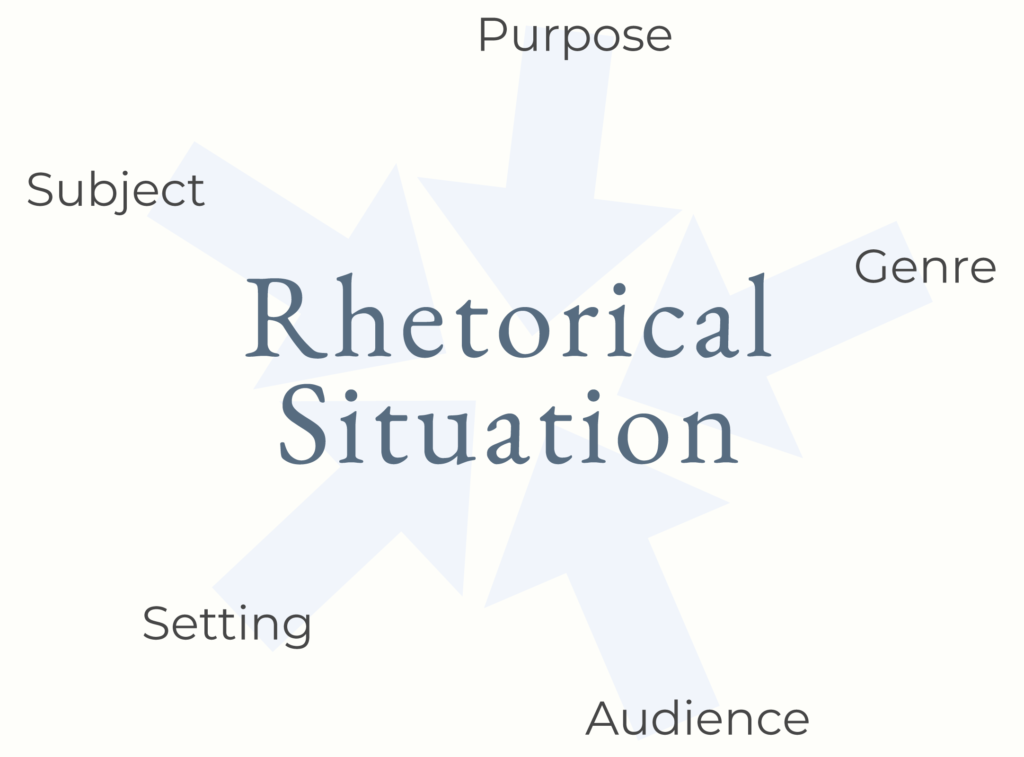
Three sources are used as examples for “Rhetorical Context Defined.”
“Impacts of the COVID-19 Pandemic on Postsecondary Students” is a report from Statistics Canada published in May 2020. It is based on data collected from and about Canada and/or Canadians. You can find out more about Statistics Canada here.
“Pandemics Aren’t Wars” was published by Vox in April 2020 and was written by Alissa Wilkinson. Vox is a free online American publication that explains the news. You can find out more about the publication here.
“Most Common Panic-Buying Purchases During Coronavirus” was published by The Onion in May 2020. The Onion is an American satirical online publication that focuses on global and local news topics. You can learn more about the publication here.
| RHETORICAL | RHETORICAL CONTEXT DEFINED | |
|---|---|---|
| Subject | What is the topic of the source? | The subject should be captured in a specific short phrase. For example, in the case of the three sources listed above, the subjects would be “Impacts of COVID-19” (Statistics Canada report), “COVID-19 Compared to War” (Vox article by Alissa Wilkinson), or “COVID-19 and Purchasing Behaviour” (The Onion article). |
| Genre | What is the type of source? | There are many categories for both fiction and non-fiction. Non-fiction sources, the type most relevant to college students, include reports, essays, textbooks, reference books, biographies, and personal narratives. |
| Purpose | What was the author’s purpose in creating the source? | Generally, the purpose is described in one of three ways: to inform (e.g. the Statistics Canada report “Impacts of the COVID-19 Pandemic on Postsecondary Students”), to persuade (e.g. the opinion piece on Vox “Pandemics Aren’t Wars”), or to entertain (e.g. the satirical article published by The Onion “Most Common Panic-Buying Purchases During Coronavirus”). |
| Audience | Who are the intended readers or viewers of the source? | To determine the intended audience, you should look at: 1) the publication and its intended audience; and 2) the language used by the author—is it specialized (e.g. jargon for a specific professional audience), complex, formal, or informal? |
| Setting | What was happening—culturally, politically, socially—that may have influenced the author? | This requires a scan of factors that may have motivated the author. In all the above examples, the authors were influenced by the global COVID-19 pandemic and its extensive impact on day-to-day life. |
How Does Audience Influence Language?

As a communicator, you make choices about language all the time, and many of these choices depend on your audience.
Imagine this: You will miss class due to a doctor’s appointment and are concerned about getting caught up on the materials.
You text your friend this message:
hey im not going to be in class due to drs appt can you send pic of notes ttul
You email your professor this message:
Dear Prof. Gupta, Unfortunately, due to a medical appointment, I will have to miss your class today. If possible, could you post your notes so that I can review them tonight? Thank you, Sophie
Think about this: Although the purpose of these messages is similar—to advise someone that you are missing class and to make a request about class notes—the language choices are quite different. The personal message to a friend is written in informal language with short forms of words and no punctuation. The message to a professor is more formal, using correct sentence form.
All authors make intentional language choices when they consider their audience and purpose.
In the following example, we will explore the rhetorical context of a source.
Watch this: “The Amazon Belongs to Humanity—Let’s Protect It Together”
Now, learn more about this source in two steps:
Step 1: Do a quick check—find the author(s), publication, and publication date.
The quick check should be really fast. In less than a minute, you can find these details:
Authors – Tashka and Laura Yawanawá. Learn more here
Publication –Ted.com. Learn more here
Publication Date – September 2019
Step 2: Investigate the rhetorical situation.
When you have watched the video and done a little more searching, you’ll be able to identify its rhetorical situation:
Subject – protection of the Amazon
Genre – non-fiction, speech
Audience – viewers of TED Talks, general public since language is straightforward with no technical terms or jargon
Purpose – to persuade viewers that Indigenous people need to be heard; they have the answers to protecting the Amazon
Setting –
• “Indigenous peoples inhabit a large portion of the Amazon rainforest and their traditional and cultural beliefs have existed for centuries” (Lutz, n.d., para. 1)—read here
• in Brazil, 160 societies live within the Amazon (Lutz, n.d., para. 2)
one of the presenters, Tashka Yawanawá, is the chief of the Yawanawá people: “he leads 900 people stewarding 400,000 acres of Amazon rainforest in Brazil” (Skoll, n.d., para. 1)
• the threat to the Brazilian Amazon rainforest increased in January 2019 when Bolsonaro, Brazil’s president, “cut funds for the enforcement of Brazil’s strict environmental laws, leading Amazon deforestation to spike” (EcoWatch, 2020, para. 14)
• the video was published at a time of significant increase in forest fires in the Brazilian Amazon rainforest; “There were … 19,925 fire outbreaks in September [2019] in the Brazilian part of the rainforest … the numbers soared by 41% compared to the same period in 2018” (Ortiz, 2019, para. 5)
When you are familiar with a source’s rhetorical context, you can situate it within the bigger picture, and are able to appreciate the source, its perspective, and its role, leading to greater understanding. You will later be able to analyze and critique it.
Try It!
Directions:
- Practise identifying rhetorical context for “It’s Time for ‘They’” and “You’ve Got to Find What You Love” by placing the following descriptors in the correct spot in the Rhetorical Context Chart.
- Compare your rhetorical context to the model.
“It’s Time for ‘They’” by Farhad Manjoo is a 2019 article from The New York Times. Read it here, find more about the author here, and learn about The New York Times here.
“You’ve Got to Find What You Love” by Steve Jobs is a 2005 commencement speech made at Stanford University. Read it here, watch it here, and find more about the author here.
In this subtopic, you’ve learned
- why it is important to explore the rhetorical context of a source;
- what should be considered as part of a source’s context; and
- how to situate a source.
Canadian Cancer Society. (n.d.). Why tobacco control is important. https://www.cancer.ca/en/get-involved/take-action/what-we-are-doing/tobacco-control/?region=on
CBC. (2013, February 26). Women & the right to vote in Canada: An important clarification. https://www.cbc.ca/strombo/news/women-the-right-to-vote-in-canada-an-important-clarification.html
Ecowatch. (2020, February 28). Indigenous people may be the Amazon’s last hope. https://www.ecowatch.com/indigenous-people-amazon-2645327056.html?rebelltitem=1#rebelltitem1
Government of Canada. (2007, February 5). History of Canada’s food guides from 1942 to 2007. https://www.canada.ca/en/health-canada/services/canada-food-guide/about/history-food-guide.html
Government of Canada. (2020, July 24). Medical assistance in dying. https://www.canada.ca/en/health-canada/services/medical-assistance-dying.html
Hardcastle, L. (2018, December 3). Decriminalization of cannabis and Canadian youth. University of Calgary Faculty of Law. https://ablawg.ca/2018/12/03/decriminalization-of-cannabis-and-canadian-youth/
Jobs, S. (2005, June 14). ‘You’ve got to find what you love,’ Jobs says. Stanford News. https://news.stanford.edu/2005/06/14/jobs-061505/
Kirkey, S. (2019, January 22). Got milk? Not so much. Health Canada’s new food guide drops ‘milk and alternatives’ and favours plant-based protein. National Post. https://nationalpost.com/health/health-canada-new-food-guide-2019
Koren, M. (2019, July 11). Why men thought women weren’t made to vote. The Atlantic. https://www.theatlantic.com/science/archive/2019/07/womens-suffrage-nineteenth-amendment-pseudoscience/593710/
Levy, S. (2020, October 1). Steve Jobs. In Encyclopedia Britannica. https://www.britannica.com/biography/Steve-Jobs
Little, B. (2018, September 13). When cigarette companies used doctors to push smoking. History. https://www.history.com/news/cigarette-ads-doctors-smoking-endorsement
Logan, R. (2001, July). Crime statistics in Canada, 2002. Canadian Centre for Justice Statistics. https://www150.statcan.gc.ca/n1/en/pub/85-002-x/85-002-x2001008-eng.pdf?st=ge9X09Hj
Lutz, D. (n.d.). Indigenous people. Amazon Aid Foundation. https://amazonaid.org/indigenous-people/
Manjoo, F. (2019, July 10). It’s time for ‘they.’ The New York Times. https://www.nytimes.com/2019/07/10/opinion/pronoun-they-gender.html
Marshall, T. (2016). Assisted suicide in Canada. In The Canadian Encyclopedia. Retrieved September 28, 2020, from https://www.thecanadianencyclopedia.ca/en/article/assisted-suicide-in-canada
Martin, V. (n.d.). Meet Tashka and Laura Yawanawa. Sanctuary Nature Foundation. https://www.sanctuarynaturefoundation.org/article/meet-tashka-and-laura-yawanawa
Oritz, J. (2019, October 18). The Amazon hasn’t stopped burning. There were 19,925 fire outbreaks last month, and ‘more fires’ are in the future. https://www.usatoday.com/story/news/nation/2019/10/18/amazon-rainforest-still-burning-more-fires-future/4011238002/
Skoll. (n.d.). Biography: Tashka Yawanawa. https://skoll.org/contributor/tashka-yawanawa/
Stanford. (2008, March 7). Steve Jobs’ 2005 Stanford commencement address [Video]. YouTube. https://youtu.be/UF8uR6Z6KLc
Statistics Canada. (n.d.). https://www.statcan.gc.ca/eng/start
Statistics Canada. (2020, May 12). Impacts of the COVID-19 pandemic on postsecondary students. https://www150.statcan.gc.ca/n1/daily-quotidien/200512/dq200512a-eng.htmStatistics Canada. (n.d.). https://www.statcan.gc.ca/eng/start
TED. (n.d.). Our organization. https://www.ted.com/about/our-organization
The New York Times Company. (n.d.). Company. https://www.nytco.com/company/
The New York Times. (n.d.). Farhad Manjoo. https://www.nytimes.com/by/farhad-manjoo
The Onion. (n.d.). About The Onion. https://www.theonion.com/about
The Onion. (2020, May 8). Most common panic-buying purchases curing coronavirus. https://www.theonion.com/most-common-panic-buying-purchases-during-coronavirus-1843345581
Vox. (n.d.). About us. https://www.vox.com/pages/about-us
Wilkinson, A. (2020, April 15). Pandemics are not wars. Vox. https://www.vox.com/culture/2020/4/15/21193679/coronavirus-pandemic-war-metaphor-ecology-microbiome
Yawanawá, T., & Yawanawá, L. (2019, September). The Amazon belongs to humanity – let’s protect it together [Video]. TED Conferences. https://www.ted.com/talks/tashka_and_laura_yawanawa_the_amazon_belongs_to_humanity_let_s_protect_it_together/up-next
Break Down a Source
Break down a source to show its meaning is clear to you. Develop a starting point for interpretation, evaluation, and critique.
What You’ll Learn:
- Why break down a source
- What are arguments and personal narratives
- How to break down arguments
- How to break down personal narratives
Pandemic Lessons: An Effective Argument?
Read this: In a May 2020 cbc.ca article, Canadian Mark Sakamoto expresses this view on COVID-19: “This pandemic has highlighted how our globalized and deeply interconnected world can be so vulnerable to a virus. How quickly and widely it can spread—to devastating effect. However, it has also shown us that our knowledge and expertise and hope can be shared just as quickly” (para. 3–4).
Consider this: There is hope to this perspective. Do you share this view? Does it relate to your experiences during the pandemic? What would you want to know before evaluating this argument further? How could you ensure that you assess the argument fairly and respectfully?
Read the full piece here. Read more about the author here.
Why Break Down a Source

When you break down a source, you gain a clearer picture of how it is constructed. The benefits include
- furthering your understanding;
- identifying its parts and its structure; and
- laying the foundation, when applicable, for your development of a similar source, or for evaluation, interpretation, and critique.
For example, perhaps you must write a formal technical report as the culminating task for a capstone course in your program. Your professor provides you with a sample report from a previous student to use as a model. Your professor asks you to take the report apart, noticing its focus, support, organization, and style of writing. In doing this, you begin to understand how the report is constructed and think about how you will apply this understanding to write your formal report.
Or you are presenting an overview and interpretation of a recently released journal article in your field. You need to break down the article into its main idea and supporting points before you can interpret it. As you work on this, you develop a deeper understanding of the source’s position, and subsequently, you can begin to evaluate the strength and credibility of its support (see Rob’s Subtopics).
Arguments and Personal Narratives
(Content in this section is used with permission from Unit 6 of Centennial College 170 Online, Winter 2020.)
We will examine two types of sources further since they are often used in college-level communication courses: arguments and personal narratives. Both offer a perspective on an issue, question, or problem. Both have a message to share and provide support for that message.
However, they are different in several ways.
Arguments typically address a current issue and are persuasive—that is, the author has an opinion on a subject and intends to persuade the audience of their point of view. They do this by using various reasons and forms of evidence to influence the audience and substantiate their main idea or thesis. Their thesis is often directly stated.
Personal narratives address a problem or question and use first-person fact-based experiences, anecdotes, and life details to support the author’s perspective. Their main message is often implied and has to be determined by the audience after careful consideration.
| ARGUMENT | NARRATIVE |
|---|---|
| Addresses an issue | Addresses a problem or question |
| Includes a thesis (often explicitly stated) | Includes a main idea (often implied) |
| Provides reasons to support the thesis | Uses critical events (plot) from a story to emphasize, illustrate, and/or reinforce the main idea |
| Uses various types of evidence to support the thesis | Uses other narrative strategies and elements |
How to: Break Down an Argument
(Content in this section is used with permission from Unit 6 of Centennial College 170 Online, Winter 2020.}
Most arguments contain some mixture of the following types of strategy, known as rhetorical appeals (Centennial College, n.d., para. 5):
Logical: The writer persuades through facts and reasoning designed to seem rational and reasonable.
Emotional: The writer persuades through imagery, words, and stories designed to make the reader feel an emotion—joy, horror, sadness, empathy, etc.
Ethical: The writer persuades through markers of credibility (writing that is fair-minded, accurate, and self-aware; but this may also refer to elements not directly in the text, such as the writer’s background, experience, education, and reputation).
When you take an argument apart, you will look for its issue, thesis, reasons, and evidence.
An issue is the question or controversy addressed by the author.
The thesis is the author’s perspective or point of view about the issue.
- Evidence is provided by the author to support the thesis.
- It helps to explain and provide reasons for the author’s position.
- Evidence can take various forms including anecdotes, personal observations or experiences, expert knowledge, statistics, historical details, scenarios, common knowledge, and analogies.
More on Evidence
| TYPES OF EVIDENCE | EXAMPLES | WHAT YOU’LL SEE |
|---|---|---|
| Stories or accounts based on the author’s personal experience | Stories or accounts based on the author’s personal experience | “I,” “my,” and other uses of the singular first-person voice |
| Expert (or disciplinary) knowledge | Theories, concepts, or research produced by scholars, journalists, scientists, or other writers | Full name of the expert, title of work by expert, university or college affiliation, title (i.e. PhD or Dr.), reference to study/results, such as “recent studies show. . .” |
| Statistics | Research in the form of data | Historical details |
| Historical details | Specific events that take place in the recent or distant past | Dates, places, notable historical figures/events (“9/11,” “WWII,” “Gulf War,” etc.) |
| Scenarios | Hypothetical situations | Asked to imagine a possible situation that could happen |
| Common knowledge | Information that is shared and widely known by the general public; may be extended to include commonly shared experiences and observations | Might use “we,” “our,” and other uses of the plural first-person voice |
| Analogies | Comparisons | Similarities found between two subjects, may use words or phrases such as “like,” “compared to,” “similar to” |
We’ll practise breaking down an argument by looking further at “It’s Time for ‘They’” by Farhad Manjoo.
| Break Down an Argument: “It’s Time for ‘They’” by Farhad Manjoo | |
|---|---|
|
Issue Tip: Express as a question. | Should the plural pronoun ‘they’ be used in place of the singular gendered pronouns ‘he’ and ‘she’ in common usage? |
|
Thesis Tip: Express as an answer to the question. | In 2020, we should make the shift to ‘they,’ avoiding gender assumptions in our choice of pronouns (see para. 5, 6, and 18) |
|
Reasons & Evidence | Few linguistic advantages to gendered pronouns he/she (para. 3) • personal observation (para. 3) “They” is ubiquitous, inclusive, neutral, and already widely used (para. 7) • expert opinion (para. 8–10) “They” is used in mainstream media by marketers and companies • personal observation (para. 11) “They” does not default to the limitations of gender binary • personal observation (para. 13–16) |
When you break down Manjoo’s argument in this way, it is simplified. You can use this simplified version to verify your understanding of the argument with a professor, colleague, or friend. In addition, you may want to find other opinions that respond to the same issue. You can use the issue to develop a research question and look for other relevant sources.
Subsequently, you can assess how well Manjoo supports the thesis with reasons and evidence. Are they sufficient to you as a reader? Would you prefer to see less personal experience and more expert opinion? Perhaps, if you prefer logical appeals—numbers, research studies, expert opinions—you would feel more persuaded if Manjoo increased the use of these forms of evidence.
How to: Break Down a Personal Narrative
(Content in this section is used with permission from Unit 6 of Centennial College 170 Online, Winter 2020.)
Personal narratives are an essay about a particular moment, event, problem, or question that occurs in the author’s life. They are usually brief and tightly focused. They use the same narrative techniques as fictional stories—plot, character, setting, figurative language—but they are true and autobiographical.
When you break down a personal narrative, you should look for its problem, main message, and narrative strategies/elements.
The writer of a personal narrative usually seeks to understand or unravel some specific problem or question in their life.
Narrative writers typically avoid stating their main meaning directly. Readers must infer the lesson of the narrative, and it’s possible for different readers to arrive at different—but related—interpretations. As a reader, questions to ask may include “What does the writer most want me to understand?” or “What is the writer’s central insight?”
Narratives are built out of narrative elements, using key events in the personal story to support the main message. Narrative elements include character, plot, setting, theme, and symbolic or figurative language.
We’ll practise breaking down a personal narrative by looking further at “The Danger of a Single Story” by Chimamanda Ngozi Adichie.
Break Down a Personal Narrative: “The Danger of a Single Story” by Chimamanda Ngozi Adichie
| Problem/Question Tip: Can be expressed as a question or a statement. | |
|---|---|
|
Problem/Question Tip: Can be expressed as a question or a statement. | Why should people avoid simplifying the narratives of others’ lives? |
|
Main Message Tip: Express as a statement, related to the problem/question. | When viewing others, we should avoid the tendency to simplify someone’s life into a “typical” narrative because it will be incomplete; we will overlook nuances and be influenced by stereotype, bias |
|
Narrative Elements Tip: Address various elements. | Events/Plot
e.g. From paragraphs 1 to 20 only • grew up in Nigeria influenced by British and American literature • recalls a limited view of a neighborhood boy • attends university in America and is viewed by the single story of Africa: “a single story of catastrophe” • visits Mexico and had her own limited view of Mexicans/the country Setting: e.g. Geographical – Nigeria, America, Mexico e.g. Time – 1970s to 2000s (Adichie’s childhood to adulthood) Characters: e.g. Adichie, parents, university roommate, other Nigerians Theme: e.g. Limitations of stereotypes: “What struck me was this: She felt sorry for me even before she saw me…. My roommate had a single story of Africa: a single story of catastrophe” (para. 13). |
When you break down Adichie’s narrative, you get a well-defined picture of it. You clearly identify its main message and how Adichie supports it. Again, it gives you an opportunity to verify your understanding before moving on to evaluate and interpret it. You can also search for other sources that relate to it, that address the same problem. This allows you to begin to evaluate Adichie’s ideas. Are her ideas relevant? Are they shared by others? Are they verifiable? Can you find other authors who support or, perhaps, contradict Adichie’s perspective on this problem?
Try It!
Directions:
A. Break Down an Argument
- Watch “Fighting Islamophobia with Education” by Shafique Virani.
- Break down Virani’s argument by identifying the issue, thesis, and reasons/evidence.
- Check your work with your instructor or a peer.
B. Break Down a Narrative
- Read “Why Would My Father Not Want to Know Me” by Tara Ellison.
- Break down Ellison’s personal narrative by identifying the problem, main message, and narrative elements.
- Check your work with your instructor or a peer.
In this subtopic, you’ve learned an important step in absorbing a source. This includes
- defining arguments and personal narratives;
- breaking down arguments into issue, thesis, and reasons/evidence; and
- breaking down personal narratives into problems, main message, and narrative elements or strategies.
Adichie, C. N. (n.d.). About. https://www.chimamanda.com/about-chimamanda
Adichie, C. N. (2009, July). The danger of a single story [Video]. TED Conferences. https://www.ted.com/talks/chimamanda_ngozi_adichie_the_danger_of_a_single_story?language=en
Adichie, C. N. (2020, May 18). The danger of a single story. LibreTexts. https://human.libretexts.org/Bookshelves/Literature_and_Literacy/Book%3A_88_Open_Essays_-_A_Reader_for_Students_of_Composition_and_Rhetoric_(Wangler_and_Ulrich)/Open_Essays/01%3A_The_Danger_of_a_Single_Story_(Adichie)
CBC. (n.d.). Mark Sakamoto. https://www.cbc.ca/arts/mark-sakamoto-1.4582744
CBC News. (n.d.). About CBC News. https://www.cbc.ca/news/about-cbc-news-1.1294364
CBC News: The National. (2017, April 4). Fighting Islamophobia with education | ViewPoints [Video]. YouTube. https://youtu.be/TtXCJ6NQwSY
Centennial College. (n.d.). Unit 6: Beginning project 2 – choosing a source. In COMM 170. Winter 2020 [Online course]. https://e.centennialcollege.ca/d2l/le/content/496524/viewContent/5529231/View
Ellison, T. (n.d.). About Tara. https://taraellison.com/
Ellison, T. (2020, June 19). Why would my father not want to know me. The New York Times. https://www.nytimes.com/2020/06/19/style/modern-love-coronavirus-missing-father.html
Manjoo, F. (2019, July 10). It’s time for ‘they’. The New York Times. https://www.nytimes.com/2019/07/10/opinion/pronoun-they-gender.html
Sakamoto, M. (2020, May 24). Knowledge, expertise and home can spread just as quickly as a virus. https://www.cbc.ca/news/opinion/opinion-mark-sakamoto-learning-during-covid-crisis-1.5559452
TED. (n.d.). Our organization. https://www.ted.com/about/our-organization
The New York Times Company. (n.d.). Company. https://www.nytco.com/company/
The New York Times. (n.d.). Farhad Manjoo. https://www.nytimes.com/by/farhad-manjoo
The New York Times. (n.d.). Modern Love. https://www.nytimes.com/column/modern-love
Virani, S. N. (n.d.). About Professor Virani. https://shafiquevirani.org/
Summarize
Create shortened versions of a source in a respectful, neutral, and fair way that reflect a deep understanding.
What You’ll Learn:
- Why summarize
- How to summarize
- How to give attribution
- How to stay neutral
Recall what you know: What do you already know about summarizing? Take this quick true or false test to find out.
Summaries can range in length from a couple of sentences to multiple paragraphs.
The correct answer is
TRUE: depending on the length of the original source that is being summarized and the type of summary you are writing, the length will vary.
Summaries should clearly acknowledge the original source that is being summarized.
The correct answer is
TRUE: it’s important that a summary states the title, author, and date of the original source; typically, it should be identified in the opening of the summary.
Written summaries can use word-for-word content from the original source.
The correct answer is
FALSE: typically summaries should be written in your own words and avoid quoted content from the original source.
Summaries should include your opinion and evaluation.
The correct answer is
FALSE: summaries should be objective and remain neutral.
Summarizing is an important academic skill, but you won’t need to summarize in your professional life.
The correct answer is
FALSE: summarizing is considered an important skill in the workplace. According to Bhavna Dalal (2016) in an article published by Forbes India, “A well-spoken summary can verify that people understand each other. It can make communications more efficient and ensure that the gist of the communication is captured by all involved” (para. 19).
Think about this: Effective summarizing reflects your understanding of a source. Summarizing is simple, but not easy! This is where the time you spend on getting to know a source (see Prepare, Pause, and Frame; Skim, Scan, and Use Tools; Situate; Break Down a Source) will pay off. How effective are your summarizing skills? What can you do to improve them? How can you ensure your summaries have academic integrity?
Why Summarize
When you summarize, you condense and restate the essential meaning of a source. You use your own words but respect the message of the original without adding, interpreting, or assessing anything.
This is key: Your judgment and critical evaluation are on hold, for now.
Think about the areas of your life in which summarizing plays an important role. In an academic setting, some examples of summarizing include
- integrating content from a source into your work to add credibility to yourself as an author and/or to build an argument;
- showing your group members or professors that you grasp their ideas;
- making notes while studying, as you work independently or collaboratively on ensuring that you comprehend course material; and
- capturing findings from a recent journal article.
Beyond this, in academic, professional, or personal contexts, you can use summarizing in active listening, a valuable skill. You can also use it to share ideas, find common ground, identify and correct misunderstandings, and de-escalate conflict.
Imagine This: Summarizing Scenarios
| Scenario | How Summarizing Helps |
|---|---|
| Due to a medical appointment, your group member misses an important three-hour class. This is a problem since you are working on an assignment together that requires an understanding of that class content. Given your busy schedules, you only have one night to work on the assignment, so it’s essential that your group member catches up quickly. | You summarize the class content for your group member, highlighting the main points. You’re able to do this in 30 minutes because you omit activities and the minor points made by the professor. Now, you can move on to complete the assignment effectively. |
| You and a colleague do not see eye to eye on how to approach a project for an important client. You have tried to discuss it numerous times, but it ends up with each of you sticking firmly to your plan. You have to figure this out soon. The client meeting is now just a couple of days away. | You summarize your colleague’s suggested plan for the project, ensuring to avoid your opinion and stay neutral. You then compare this to your approach. By doing so, you are able to find common ground, remove the conflict from the situation, and move forward with a shared approach. |
| You are a registered early childhood educator and supervisor at a local nursery school. Your staff have identified a child who may require early intervention services, and you need to meet with the parents to share these concerns. | You gather the observations of your staff and summarize them when meeting with the parents. The parents provide their input, and then you neutrally and respectfully summarize what you’ve heard from them. You work collaboratively with them to find common ground on the best steps forward to support their child. |
How to Summarize
You should only summarize after you have engaged actively with an author’s message to ensure that you have an accurate understanding of it. (See Prepare, Pause, and Frame; Skim, Scan, and Use Tools; Situate; and Break Down a Source.)
Summarizing involves
- grasping the core meaning;
- distinguishing between the most and least important ideas;
- explaining the main ideas in your own words accurately, respecting the author’s perspective; and
- omitting your evaluation or opinion.
In academic writing, you may need to write a brief summary of a source, and in other cases, you will write an extended summary.
| Brief Summary | AND/OR | Extended Summary |
|---|---|---|
| Source title, publication details, author’s name, and main idea only | Source title, publication details, author’s name, and main idea | |
| 1–2 sentences in length | Main points in sequential order | |
| Paragraph form with transitions between points to ensure coherence | ||
| Length varies (depending on the length of the original source, but it should be much shorter than the original) |
Tips for summarizing in academic writing include the following:
- write in the present tense;
- acknowledge the source’s title, publication date, and author in the opening of the summary;
- capture the author’s main idea in the opening of the summary, and then summarize the key points in sequential order after that;
- use various verbs to give attribution to the author throughout the summary (see more in How to Give Attribution and Stay Neutral);
- avoid using exact words from the original source unless necessary (avoid looking at the source when summarizing to ensure that your wording is unique);
- be sure to quote (i.e. include content in quotation marks) if it is necessary to use exact words from the source; and
- cite appropriately (see a relevant style guide for various options).
BRIEF SUMMARY
In “It’s Time for ‘They’” published in The New York Times in 2019, author Farhad Manjoo argues that the pronoun ‘they’ should be uniformly used in place of gendered pronouns such as ‘he’ and ‘she.’
EXTENDED SUMMARY
In “It’s Time for ‘They,’” published in The New York Times in 2019, Farhad Manjoo argues that the pronoun ‘they’ should be uniformly used in place of gendered pronouns such as ‘he’ and ‘she.’ Manjoo begins by indicating that people use ‘he’ and ‘him’ when referring to them, and Manjoo accepts this. However, Manjoo comments on issues with assuming gender and asserts that gendered pronouns have limited advantages. Manjoo is confused by the need of some institutions to continue to use gendered pronouns and points out the advantages of uniform use of ‘they.’ Manjoo believes it is inclusive and ubiquitous; this is supported by a study. Manjoo observes that many companies use ‘they’ in marketing and states that only grammarians are recommending against it. Manjoo believes society should avoid gender norms, and that doing so in language is a start. Manjoo concludes with a request that others use the pronoun ‘they’ for both Manjoo and themselves.
This example illustrates how the extended summary can begin with the one-sentence brief summary, which captures the article’s thesis, and then move on to capture the main supporting points provided in the article in sequential order. The extended summary uses citations narratively in each sentence (e.g. “Manjoo comments”; “Manjoo believes”). This is one acceptable way to use citations in a summary according to APA 7 (Walden University, 2020, para. 11). After reading the extended summary, the audience should have a good grasp of Manjoo’s argument.
How to Give Attribution
When you summarize, you must clearly indicate that the ideas you are condensing are not your own; they belong to someone else. This is where author attribution plays a role. Giving author attribution is a key part of ensuring that your summaries have academic integrity.
You are summarizing the main point of “You’ve Got to Find What You Love” by Steve Jobs. You write this:
It’s essential to learn lessons from life experience.
The problem with this is your audience will not know if this is your idea or Steve Jobs’s idea. However, you can fix this by attributing the idea to Jobs. Here is one way you could do this:
Jobs illustrates that it’s essential to learn lessons from life experience.
Notice that the summary of the content is the same (highlighted text), but now this idea is attributed to its author—Steve Jobs—through the use of the lead, “Jobs illustrates that.”
You are a social services worker and have been tasked with summarizing the findings from the report “Ending Mandatory Minimums for Drug Offences.”
You might write this:
Compulsory minimum jail time for drug-related and non-violent offences should be eliminated, giving judges more discretion in sentencing decisions.
There is no attribution for the source of this idea; this means that the reader cannot look up the report to learn more or validate the summary. This undermines the credibility of the summary.
Here is one way to correct this issue:
A report from the Canadian Association of Social Workers (2020) recommends that compulsory minimum jail time for drug-related and non-violent offences should be eliminated, giving judges more discretion in sentencing decisions.
In the correction, there is clear attribution to the author of the report (in this case, the Canadian Association of Social Workers) so that the reader can look up the report to learn more.
You can choose from many verbs to show attribution to the author. These are referred to as signal verbs, and some style guides specify that they should be in the present tense. Here is a helpful list to get you started:
- advises
- asserts
- concludes
- continues
- contradicts
- disagrees
- elaborates
- expands
- illustrates
- points out
- predicts
- states
- supports
For many more signal verbs, see here.
Stay Neutral
Staying neutral in a summary can be tricky because you may have a strong opinion on the source that you are eager to express. However, you need to hold back your opinion at this point since the purpose of a summary is to demonstrate a respectful and thorough understanding of a source’s ideas.
You are summarizing June Callwood’s piece “Forgiveness Story.” You might be tempted to write this:
Callwood illustrates various scenarios for forgiveness, thus engaging the reader in a thoughtful way.
However, when you write “thus engaging the reader in a thoughtful way,” you are no longer offering a neutral view of Callwood’s ideas. Instead, you are layering in your opinion on the piece.
You stay neutral by simply using the first part of this sentence:
Callwood illustrates various scenarios for forgiveness.
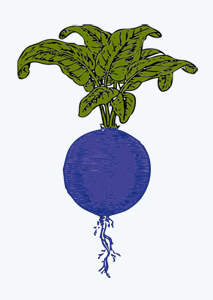
You’re summarizing a scientific finding that you read titled “Beets Bleed Red but a Chemistry Tweak Can Create a Blue Hue,” and you write this:
In a significant discovery in the field of food science, scientists discovered that beet juice, which is normally a deep red in colour, can be turned blue by modifying the bonds in the beet pigment (Drahl, 2020).
However, the use of the word “significant” reflects your opinion of this discovery and should be avoided when writing a neutral summary. You can correct this by just omitting that word:
In a discovery in the field of food science, scientists discovered that beet juice, which is normally a deep red in colour, can be turned blue by modifying the bonds in the beet pigment (Drahl, 2020).
Try It!
Directions
- Watch this 3.27 minute TED Talk: “Why 1.5 Billion People Eat with Chopsticks” by Jennifer 8. Lee.
- Practise writing a brief summary of this source. (Tips: Remember to include the source details (citation) as part of the summary and limit your summary to 1–2 sentences.)
- Practise writing an extended summary of this source. (Tips: Include details of the source and its main idea first, use present tense throughout, give attribution to the author, and limit your summary to 100–150 words.)
- Compare your brief and extended summaries with the model.
Model: Brief Summary
In the 2020 TED Talk “Why 1.5 Billion People Eat with Chopsticks,” author and journalist Jennifer 8. Lee informs viewers that there is a rich history to chopsticks and various reasons for today’s widespread use.
Model: Extended Summary
In the 2020 TED Talk “Why 1.5 Billion People Eat with Chopsticks,” author and journalist Jennifer 8. Lee informs viewers that there is a rich history to today’s widespread chopstick use and various reasons for it. She begins by describing how to use chopsticks and the variations of materials that can be used for chopsticks. The author believes that chopsticks are suitable for certain foods and shares that their design varies slightly by country. She describes the transition to chopstick use in the West and comments on the reasons they may have been useful thousands of years ago in the East. The author continues by discussing how chopsticks work well for the small bites of food typical in Asian cooking and that they reflect the communal eating style. She concludes with a legend on chopstick use in heaven versus hell.
In this subtopic, you’ve learned how to summarize a source including
- writing brief summaries;
- developing longer or extended summaries;
- giving attribution to the author; and
- remaining neutral throughout the summary.
Freedman, L. (n.d.). Summarizing. University of Toronto. https://advice.writing.utoronto.ca/researching/summarize/
Summarizing. (n.d.). Excelsior Online Reading Lab.
https://owl.excelsior.edu/wp-content/uploads/sites/2/2017/03/Summarizing2019.pdf
Webster, M. (2017, January 18). How to write an academic summary. Thompson Rivers University. https://inside.tru.ca/2017/01/18/how-to-write-an-academic-summary/
Writing a summary. (n.d.). Las Positas College. http://www.laspositascollege.edu/raw/summaries.php
Callwood, J. (2007, June 12). Forgiveness story. The Walrus. https://thewalrus.ca/forgiveness-story/
Canadian Association of Social Workers. (n.d.). About CASW. https://www.casw-acts.ca/en/about-casw/about-casw
Canadian Association of Social Workers. (2020, March). Ending mandatory minimums for drug offences. https://www.casw-acts.ca/sites/default/files/documents/Ending_Mandatory_Minimums_for_Drug_Offences_23.pdf
Dalal, B. (2016, August 30). Paraphrasing and summarizing: Two weapons of solid communication. Forbes India. https://www.forbesindia.com/blog/life/paraphrasing-and-summarising-two-weapons-of-solid-communication/
Drahl, C. (n.d.). https://www.carmendrahl.com/
Drahl, C. (2020, April 3). Beets bleed red but a chemistry tweak can create a blue hue. https://www.sciencenews.org/article/chemistry-tweak-beets-red-juice-create-true-natural-blue-dye
Jobs, S. (2005, June 14). ‘You’ve got to find what you love,’ Jobs says. Stanford News. https://news.stanford.edu/2005/06/14/jobs-061505/
Lee, J, 8. (n.d.). http://www.jennifer8lee.com/
Lee, J, 8. (2020, January). Why 1.5 billion people eat with chopsticks [Video]. TED Conferences. https://www.ted.com/talks/jennifer_8_lee_why_1_5_billion_people_eat_with_chopsticks?utm_campaign=tedspread&utm_medium=referral&utm_source=tedcomshare
Levy, S. (2020, October 1). Steve Jobs. In Encyclopedia Britannica. https://www.britannica.com/biography/Steve-Jobs
Manjoo, F. (2019, July 10). It’s time for ‘they.’ The New York Times.
https://www.nytimes.com/2019/07/10/opinion/pronoun-they-gender.html
Science News. (n.d.). About Science News. https://www.sciencenews.org/about-science-news
Stanford. (2008, March 7). Steve Jobs’ 2005 Stanford commencement address [Video]. YouTube. https://youtu.be/UF8uR6Z6KLc
TED. (n.d.). Our organization. https://www.ted.com/about/our-organization
The Editors of Encyclopaedia Britannica. (n.d.). June Rose Callwood. In The Encyclopaedia Britannica. https://www.britannica.com/biography/June-Rose-Callwood
The New York Times Company. (n.d.). Company. https://www.nytco.com/company/
The New York Times. (n.d.). Farhad Manjoo. https://www.nytimes.com/by/farhad-manjoo
The Walrus. (n.d.). The Walrus is Canada’s conversation. https://thewalrus.ca/about/
University of Illinois Springfield. (n.d.). Signal verbs. https://www.uis.edu/cas/thelearninghub/writing/handouts/grammar-mechanics-and-style/signal-verbs/
Walden University. (n.d.). Using evidence: Citation frequency in summaries. https://academicguides.waldenu.edu/writingcenter/evidence/citations/summaries
Paraphrase
Put an author’s ideas into fresh and unique words but stay true to and respect their meaning. Ensure to give credit to the author.
What You’ll Learn:
- Why paraphrase
- How to paraphrase
- Why cite in a paraphrase
Recall what you know: Like summarizing, paraphrasing is an important skill for effective communication in many contexts. Do you know the similarities and differences between summary and paraphrase? Test your knowledge by dragging the descriptors into the appropriate columns.
Think about this: Think of times when you paraphrase in your day-to-day life—perhaps for professional or personal purposes. How important is it to ensure your paraphrase respects the original message’s meaning? Consider how this is a critical part of developing a paraphrase that has integrity and also supports your credibility as an effective communicator.
Why Paraphrase
When you take someone’s ideas and express them in your words while keeping the same approximate length, you are paraphrasing. You must ensure the meaning is consistent with the original source and avoid layering in your commentary or opinions so that the intention of the author is maintained.
When you paraphrase, you are doing more than just finding synonyms to replace individual words; instead, you create content that reflects and respects the original meaning of a source while using language and structure that feels fresh and unique. Like summarizing, this reflects a deep understanding of the original source’s meaning and consideration of the author’s viewpoint. Also, like summarizing, you can use paraphrasing in various contexts and situations: academic, professional, and personal. Some examples include clarifying misunderstandings, demonstrating active listening, and finding common ground with others.
In addition, paraphrasing is a tool for resolving conflict. This is explained in an article titled “Communicating in Conflict,” from the Vancouver Island University’s website:
Miscommunication happens when we assume we understand, but haven’t checked out that assumption. When we do, we may find that we are misinterpreting some of what was said, or missing some key element that is important to the other person. Paraphrasing not only checks for clarity and accuracy of understanding, but also lets the other person know they have been heard and understood. (Vancouver Island University, 2020, para. 5)
Definition, Please! What Is Paraphrasing?
In a 2018 study published in English for Specific Purposes, the authors discuss paraphrasing in this way:
There is no consensus on what constitutes a good paraphrase (Shi, 2012), though many would agree that paraphrasing is recasting the source text accurately with a credit to the original author. Such a definition … suggests that a paraphrase should be ‘exactly logically equivalent’ (Bhagat & Hovy, 2013, p. 471), but not containing the original vocabulary and sentence structure (e.g., Oshima & Hogue, 1999). (Shi, Fazel, & Kowkabi, 2018, p. 31)
Is Paraphrasing Easy?
No, paraphrasing is not easy! Since it relies on a deep understanding of the original message, you cannot rush paraphrasing, and, at times, it can feel like a tedious, difficult, perhaps even painful process. In the same study, the authors observe that “students, even advanced graduates, find it challenging to develop the intertextual skill of paraphrasing” (Shi, Fazel, & Kowkabi, 2018, p. 32).
How to Paraphrase
You’re ready to paraphrase when you’ve spent time with a source to ensure that you understand it fully. Paraphrasing involves
- grasping the core meaning and logic of the original source;
- using distinctive wording and sentence structure, showing respect for the author’s voice and viewpoint;
- citing; and
- omitting your evaluation or opinion.
In your academic work, you will often need to paraphrase when using and accurately representing the ideas of scholars and professionals in your field of study.
While you are developing the ability to paraphrase in your academic writing, you may find it useful to follow a step-by-step process:
STEP 1 – Understand the author’s message and logic.
STEP 2 – Use synonyms when possible to replace original words.
STEP 3 – Put it back together.
STEP 4 – Use new sentence structure and order.
STEP 5 – Review your paraphrase to ensure that it is true to the original meaning.
STEP 6 – Clearly give attribution, contextualize, and cite.
This example paraphrases the following line from “The Danger of a Single Story” by Chimamanda Ngozi Adichie (2009):
“It is impossible to talk about a single story without talking about power” (para. 22).
| STEP 1: Understand Adichie’s message and logic. | Adichie is referring to power as one of the elements that contribute to the over-simplification of others’ lives into a stereotypical narrative. |
| STEP 2: Use synonyms to replace Adichie’s words. | Impossible – difficult
Talk – discuss Single – one or sole or simplified or stereotypical Story – narrative Without – with no or devoid of Talking – discussing About – regarding Power – influence or authority |
| STEP 3: Put it back together. | It is difficult to discuss a simplified or stereotypical narrative if it does not include a discussion of influence and authority. |
| STEP 4: Use new sentence structure and order. | Influence and authority cannot be omitted when discussing simplified and stereotyped narratives. |
| STEP 5: Review your paraphrase to ensure that it is true to the original meaning. | Yes, the paraphrase retains the original line’s meaning; the two versions are logically equivalent. |
| STEP 6: Clearly give attribution, contextualize, and cite. |
Sample 1 – Parenthetical in-text citation (exclude author’s name and date of publication from lead-in):
Many variables must be considered when discussing a ‘single story.’ For example, the author asserts that influence and authority cannot be omitted when discussing simplified and stereotyped narratives (Adichie, 2009, para. 22). Sample 2 – Narrative in-text citation (include author’s name and date of publication in lead-in): Many variables must be considered when discussing a ‘single story.’ In her TED Talk, “The Danger of a Single Story,” Chimamanda Ngozi Adichie (2009) asserts that influence and authority cannot be omitted when discussing simplified and stereotyped narratives (para. 22). |
As illustrated in this example, it is not sufficient to just use synonyms to replace some words in the original. Just using synonyms would result in the sentence from step 3 above: It is difficult to discuss a simplified or stereotypical narrative if it does not include a discussion of influence and authority.
This is not an effective paraphrase since it is too close to the original. A paraphrase must use new sentence structure or order too, ensuring that it is fresh and unique while remaining true to the original line’s meaning.
Some words have multiple synonyms, so how do you choose the best one? This is where your understanding of the source’s meaning and context will come into play. In this example, synonyms for “single” include “sole” and “one.” However, given the context of the piece, the author is using the term “single” to refer to “stereotypical” or “oversimplified.” Given this, these words are better choices to replace “single.”
More on Synonyms
Do all words have synonyms? No. Some words, phrases, and terms do not have readily available synonyms and, therefore, the original words are used in the paraphrase. This includes, but is not limited to, proper nouns (e.g. Canada, COVID-19, DNA, Centennial College) and technical terms (e.g. polymerase chain reaction, wifi, return on investment).
After examining the following original lines and paraphrases, consider “Is this an acceptable paraphrase?” Then, compare your assessment to the model for each paraphrase.
Original Line 1:
“Gender is a ubiquitous prison for the mind, reinforced everywhere, by everyone, and only rarely questioned” (Manjoo, 2019, para. 15).
Paraphrase 1:
Gender is an omnipresent jail for the psyche, strengthened universally, by all, and barely examined (para. 15).
No, it is not acceptable.
It uses synonyms, and the meaning is retained. However, it does not use a unique sentence structure and order. In addition, although it includes a paragraph number, it does not give attribution, cite, and contextualize.
Original Line 2:
“Restaurants will need more support remaining viable until they are on a path to full recovery” (Restaurants Canada, 2020, para. 2).
Paraphrase 2:
In response to the pandemic, it is claimed that, pending a complete revival, eateries will require additional assistance to sustain their businesses (para. 2).
No, it is not acceptable.
It uses synonyms, and the meaning is retained. It also uses a unique sentence structure and order. However, although it includes a paragraph number, it does not give attribution, cite, and contextualize.
Original Line 3:
“Type A is considered to be the influenza virus type with the greatest impact on public health as it has caused more than a dozen documented pandemics since the 1700s, with the latest occurring in 2009” (Government of Canada, 2019, para. 3).
Paraphrase 3:
A report titled “Biosafety Directive for New and Emerging Influenza A Viruses” states that from 1700 to 2009, Influenza Type A produced greater than twelve global epidemics, and, as a result, it is deemed the influenza virus category with the most significant public health effects (Government of Canada, 2019, para. 3).
Yes, it is acceptable.
Although some of the words remain consistent since they do not have readily available synonyms (e.g. Influenza Type A), the paraphrase uses synonyms where possible and retains the meaning. It also uses a unique sentence structure and order. Finally, it includes appropriate attribution, citation, and contextualization.
Why Cite in a Paraphrase
Although you use your own words in a paraphrase, do you need to cite? Yes, absolutely.
It is a common misconception that you do not need to cite paraphrased content. This is incorrect. You must cite when you use content that someone else created even if you paraphrase it effectively, and if you do not, it is considered plagiarism. This rule encompasses, but is not limited to,
- ideas;
- explanations;
- research;
- data and statistics;
- website content;
- blogs;
- social media posts;
- interviews;
- music and lyrics;
- videos;
- collaborations; and
- any content that is not common knowledge to the audience.
One guideline is that you should not use more than two words in a row without citing the source. Using APA-style rules, parenthetical or narrative in-text citations should include an author’s name and year of publication. A reference list entry should accompany them.
Do you need to include location information—typically a page or paragraph number—in an in-text citation for a paraphrase? Not necessarily. An APA Style Blog post titled “When and How to Include Page Numbers in APA Style Citations” clarifies when location information is necessary:
When you include a paraphrase in a paper, you are required to include only the author and date in the citation. You are encouraged (but not required) to also provide the page number (or other location information) for a paraphrased citation when it would help the reader locate the relevant passage in a long or complex text (such as when you use only a short part of a book). (Lee, 2015, para. 3)
Try It!
Directions:
- Review the criteria for an effective paraphrase:
- Synonyms are used where possible.
- New sentence structure and/or order is used.
- Original meaning is retained.
- Citation is included.
- Carefully read this line from “Forgiveness Story” by June Callwood (2007): “Apologies are iffy because they are often contrived or coerced” (para. 9).
- Decide whether each of the following paraphrases of Callwood’s words is acceptable or unacceptable. Use the criteria for an effective paraphrase to help you decide and state your rationale. Compare your responses to the model.
| Paraphrase | Acceptable or Unacceptable? | Rationale |
|---|---|---|
| Requests for forgiveness are suspicious since they are frequently artificial or forced (Callwood, 2007, para. 9). | ||
| When she discusses apologies, Callwood (2007) says that since they are frequently artificial or forced, requests for forgiveness are viewed suspiciously (para. 9). | ||
| Since they are frequently artificial or forced, requests for forgiveness are viewed suspiciously. | ||
| When requesting forgiveness, sincerity is essential (Callwood, 2007, para. 9). | ||
| Since they are frequently artificial or forced, requests for forgiveness are viewed suspiciously (Callwood, 2007, para. 9). |
| Paraphrase | Acceptable or Unacceptable? | Rationale |
|---|---|---|
| Requests for forgiveness are suspicious since they are frequently artificial or forced (Callwood, 2007, para. 9). | Unacceptable | • Synonyms are used • Meaning of original content is retained • Lacks unique sentence order • Citation is included • Context is missing |
| When she discusses apologies, Callwood (2007) says that since they are frequently artificial or forced, requests for forgiveness are viewed suspiciously (para. 9). | Acceptable | • Synonyms and new sentence order are used • Meaning of original is retained • Citation is included |
| Since they are frequently artificial or forced, requests for forgiveness are viewed suspiciously. | Unacceptable | • Synonyms and new sentence order are used • Meaning of original is retained • Citation is missing • Context is missing |
| When requesting forgiveness, sincerity is essential (Callwood, 2007, para. 9). | Unacceptable | • Synonyms and new sentence order are used • Meaning of original is not retained • Citation is included • Context is missing |
| Since they are frequently artificial or forced, requests for forgiveness are viewed suspiciously (Callwood, 2007, para. 9). | Unacceptable | • Synonyms and new sentence order are used • Meaning of original is retained • Citation is included • Context is missing |
In this subtopic, you learned that
- paraphrasing is different from summarizing but has many similarities;
- a paraphrase should use distinct words and sentence order/structure;
- synonyms do not exist for all words; and
- a paraphrase is considered plagiarism if it is not correctly cited.
Massachusetts Institute of Technology. (n.d.). Avoiding plagiarism – paraphrasing. Academic integrity at MIT: A handbook for students.
https://integrity.mit.edu/handbook/academic-writing/avoiding-plagiarism-paraphrasing
Paraphrase. (n.d.). Excelsior College Online Writing Lab. https://owl.excelsior.edu/research/drafting-and-integrating/drafting-and-integrating-paraphrasing/
University College. (n.d.). Paraphrase and summary. https://www.uc.utoronto.ca/paraphrase
Adichie, C. N. (n.d.). About. https://www.chimamanda.com/about-chimamanda
Adichie, C. N. (2009, July). The danger of a single story [Video]. TED Conferences. https://www.ted.com/talks/chimamanda_ngozi_adichie_the_danger_of_a_single_story?language=en
Adichie, C. N. (2020, May 18). The danger of a single story. LibreTexts. https://human.libretexts.org/Bookshelves/Literature_and_Literacy/Book%3A_88_Open_Essays_-_A_Reader_for_Students_of_Composition_and_Rhetoric_(Wangler_and_Ulrich)/Open_Essays/01%3A_The_Danger_of_a_Single_Story_(Adichie)
Callwood, J. (2007, June 12). Forgiveness story. The Walrus. https://thewalrus.ca/forgiveness-story/
Government of Canada. (2019, July 22). Biosafety directive for new and emerging influenza A viruses. https://www.canada.ca/en/public-health/services/laboratory-biosafety-biosecurity/biosafety-directives-advisories-notifications/new-emerging-influenza-a-viruses.html
Lee, C. (2015, March 3). When and how to include page numbers in APA style citations. APA Style Blog. https://blog.apastyle.org/apastyle/2015/03/when-and-how-to-include-page-numbers-in-apa-style-citations.html
Manjoo, F. (2019, July 10). It’s time for ‘they’. The New York Times.
https://www.nytimes.com/2019/07/10/opinion/pronoun-they-gender.html
Restaurants Canada. (2020, May 7). Restaurants need more working capital to successfully reopen. https://www.restaurantscanada.org/industry-news/restaurants-need-more-working-capital-to-successfully-reopen/
Shi, L., Fazel, I., & Kowkabi, N. (2018). Paraphrasing to transform knowledge in advanced graduate student writing. English for Specific Purposes, 51, 31–44. doi:10.1016/j.esp.2018.03.001
TED. (n.d.). Our organization. https://www.ted.com/about/our-organization
The Editors of Encyclopaedia Britannica. (n.d.). June Rose Callwood. In The Encyclopaedia Britannica. https://www.britannica.com/biography/June-Rose-Callwood
The Walrus. (n.d.). The Walrus is Canada’s conversation. https://thewalrus.ca/about/
Vancouver Island University. (n.d.). Communicating in conflict. https://adm.viu.ca/workplace-conflict/communicating-in-conflict
Clarify, Respond, and Infer
Raise questions about a source to clarify its message and context. Make personal connections and respond by drawing on your experience and world knowledge. Reach credible, respectful conclusions about a source’s unspoken meaning.
What You’ll Learn:
- Why clarify and respond personally
- How to clarify and respond personally
- Why infer
- How to infer
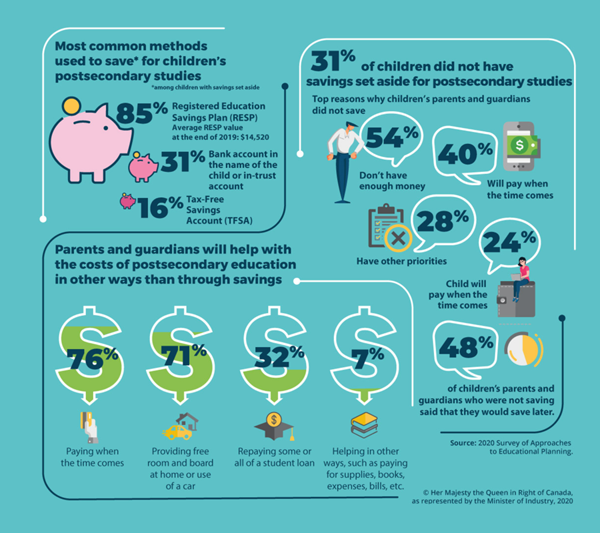
Have a look at this: In September 2020, Statistics Canada published an infographic titled “Saving for Postsecondary Education, 2020.” Check out the full infographic here.
Think about this: Focus on the inserted portion of the infographic. What do you want to know about these numbers? What is unclear? Are there parts of the infographic that you would like to know more about? How does this information relate to your own experience with saving for postsecondary education? Have you learned anything from the infographic?
Why Clarify and Respond
Why Clarify
When engaging actively with a source, you will have questions about its content, its form, its author, its context. These questions reflect your immersion in and connection with the source. Clarifying involves addressing these questions by

drawing on prior experiences;

decoding areas of the source that are confusing;

looking for answers if possible or relevant; and

going beyond what is said by the author.
Why Respond
When you absorb a source, you will have a personal response to it since it will impact you in myriad ways. In some cases, you will share the author’s viewpoint; in others, you will disagree. You may find some ideas surprising, interesting, and persuasive. Conversely, at times, you will be confused, disinterested, or even upset.
Capturing your response is important since it

furthers your engagement with a source;

helps in identifying areas “in common” with the author;
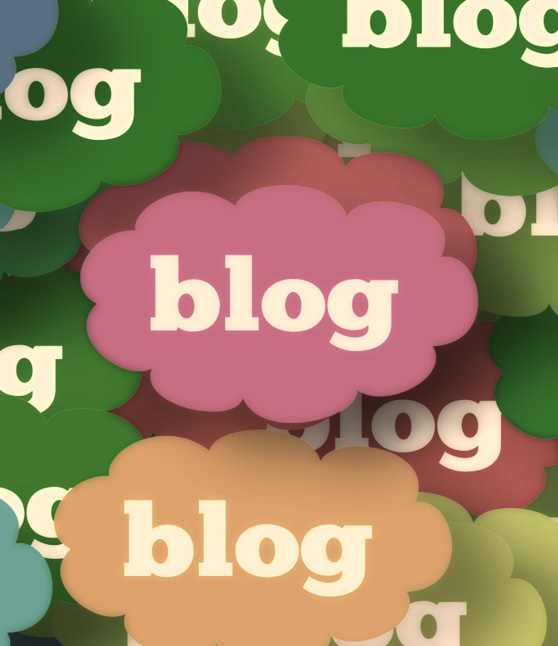
creates conversations; and
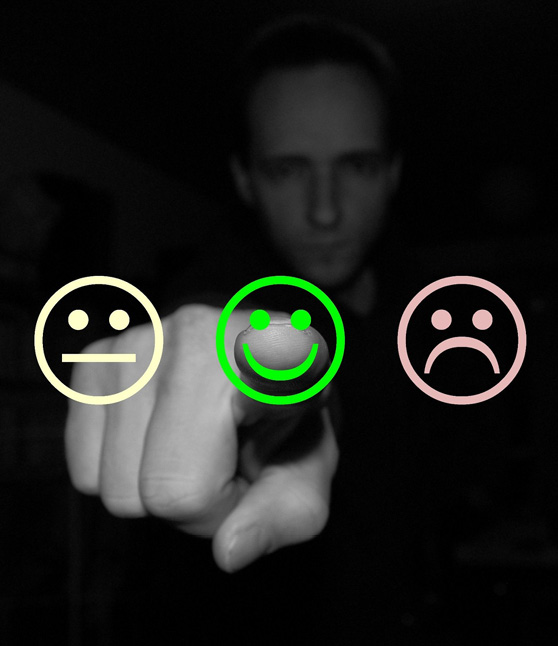
can be a starting point for critical evaluation.
How to Clarify and Respond
How to: Clarify
When you clarify, your questions will vary depending on the type of source and your prior knowledge. You might have questions about
- the author’s life experience and background, including what motivated them to share their views;
- the political, social, or cultural environment at the time of writing or publication;
- the conclusions that were drawn by the author(s) and the support provided;
- verifiability of the source with others in the same field or on the same topic; or
- methodology, sampling, and data collection and use (if it’s a journal article or research study).
At this point, you will search quickly to find answers since a more thorough and research-driven evaluation or critique will come later.
How to: Respond Personally
When developing your personal response, a number of questions can guide you:
- Is the content relevant to me as a reader? Does it support or contradict my life experience?
- In what ways do I agree/disagree with the point of view, the argument, the conclusions?
- Am I persuaded by the content?
- What challenged me? What have I learned? How have my views changed as a result of reading this material?
- What do I want to know more about?
There are no right or wrong answers. However, your response should be respectful and considerate, informed by reflection on your connection to the content and an open-minded absorption of the source.
You’re reading an analysis report from Statistics Canada titled “Inequality in the Feasibility of Working from Home During and After COVID-19.” It highlights imbalances that exist in the ability to work from home, an important and recommended containment strategy during the COVID-19 global pandemic.
Clarify
As you read this report carefully, you might have several questions about areas of the report that are unclear or seem limited in some way. These may include the following:
| Question | Specific Example |
|---|---|
| What is the method of data collection that was used? Where does the data come from? How can I learn more about the data? | The Statistics Canada Labour Force Survey 2019 is cited as the source of data for chart 1. Could I learn more by looking at this survey? |
| Are there any flaws in how the study was conducted? In its use or explanation of terms? | For example, when discussing households (see chart 1), why are “husbands” and “wives” used when discussing dual income families? Why isn’t the more inclusive term “partners” used? |
| Who was included in the study? Who was excluded? | If participation was voluntary, who chose not to participate? Were Canadians from across all provinces and territories sampled? |
| Does the evidence support the conclusions? Are there weaknesses? | What does table 1 show? Is it based only on “primary income earners” per its title, and if so, how does this impact the conclusions? |
| How do this study’s findings compare with others on the same topic? Do they make the same or a related argument? What are the areas of disagreement? | How do the conclusions compare to these other articles on related topics? “Coronavirus Highlights the Inequality of Who Can — and Can’t — Work from Home” by Abigail Hess (read it here) “Working from home reveals another fault line in America’s racial and educational divide” by Christian Davenport, Aaron Gregg and Craig Timberg (read it here) |
Respond
Your personal response to this report will be unique and will reflect your experiences. Here is a sample personal response:
The findings relate to me since I have been able to work from home during the pandemic, a situation I have appreciated. While I would like to clarify some of the data and the authors’ interpretation of it, I can see, based on observing life around me during the pandemic, that these inequalities are apparent. The choice to “stay home” during the pandemic was not possible for many. I am challenged to uncover what can be done to address this type of inequality and to learn more about other inequalities uncovered or driven by the pandemic.
Why Infer
You have absorbed the author’s voice and perspective respectfully. Now, you’re ready to move on and make inferences.
When you make an inference, you connect further with the author’s message, draw conclusions, and read “between the lines.” You use knowledge of the world and your previous experience. You’re looking at what is written or said—the evidence—to form opinions about what is not.

When you infer, there is no right or wrong answer, but any inference should be supported with logic and evidence. Others’ inferences should be accepted and respected even if they differ from the conclusions you have drawn about the same source.
All About Schema
Did you know that when you apply your background knowledge and life experience to absorb a source, you are using your internal cognitive frameworks known as schema (plural = schemata)?
In a 2015 study, “An Empirical Study of Schema Theory and Its Role in Reading Comprehension,” the term is explained: “Schema can be defined as the abstract knowledge structure the reader brings to the text” (Liu, 2015, p. 1349).
We all have our own internal schema, developed and molded by our life experience. No two schema will be the same. Schema are important for comprehension of sources. According to the same author, “meaning does not have a separate, independent existence from the reader, and prior knowledge of the reader or schema counts a lot in the extraction of meaning from the graphic words” (Liu, 2015, p. 1349).
Inference or Prediction?
Inferences and predictions are closely related but different.
Predictions are statements about the future that can be explicitly confirmed at some point. For example, if you predict at the start of a course that you will get an A grade, once the final grades are shared by the professor, the prediction will be verified as either correct or incorrect.
Inferences, however, cannot be explicitly confirmed. They are reasonable conclusions based on evidence, knowledge, and logical reasoning. For example, if you got a D grade in an online course but are typically a B-grade student in face-to-face courses, you may conclude that the online learning environment does not work for you. You would be using your knowledge (of yourself as a student) and the evidence (your grades) to draw this conclusion. However, other conclusions could be logically drawn too, including that your grade in the online course was influenced by poor course design, limited teacher interaction, and less peer collaboration.
How to Infer
To infer effectively, you should
- understand background and context (see Situate);
- use your knowledge of the author and the rhetorical situation (see Situate);
- look for clues and keywords (see Skim, Scan, and Use Tools);
- consider the “how” and “why” related to the “what”;
- use facts, details, and evidence (see Break Down a Source);
- use your prior knowledge and personal experience;
- develop an informed opinion; and
- check and double check your logic.
When you infer, you can draw conclusions in a number of ways:
(Adapted from “Infer with Evidence” by Barbara Radner. http://teacher.depaul.edu. Used with permission.)
| Infer motive | Why does the author believe this? What did the author want you to feel or understand? |
| Infer prior actions or experiences | What life experiences influenced the author? |
| Infer cause-effect | What caused _______ to happen? |
| Infer traits | What can you conclude about a person’s personality or values? |
| Infer beliefs and values | What does the person believe or value? |
| Infer feelings | How do you think ________ felt about a subject, person, life, situation, etc.? |
| Infer the main message | What is the main message that the author is sharing? |
When making inferences, you should track, support, validate, and iterate your thinking. These questions can help:
- What is my inference? (capture the conclusion you are drawing)
- What information did I use to make this inference? (capture the textual evidence and, when possible, the background knowledge and life experience)
- How valid is my inference? Do I need to change my thinking? (reflect on your logic)
You read the following passage about the use of TikTok:
I stare at the screen. It’s foreign to me, but I’m intrigued, entertained, sometimes inspired. Hearts and plus signs, arrows and comment boxes. Short dance routines. Lip-syncing memes. Strangers sharing life beliefs, life hacks, life stories. Should I watch? Should I swipe up? Should I follow or share or favourite? A tourist on TikTok, passing pandemic-restricted time. Thirty seconds becomes 30 minutes. Just one more video. Hours spent during lockdown.
You think about the inference(s) you can make from this passage, carefully considering what evidence is available. You consider these inferences:
- The author is a millennial.
- The author is a new user of TikTok.
- The author does not like life hacks.
- The author believes that it is easy to pass a lot of time on TikTok.
You decide that (b) and (d) are inferences that can be made logically from this passage; (a) and (c) are not.
(b) is an inference since the author’s use of the terms “foreign land” and “tourist” indicate that they are new to TikTok. This is also indicated by the author’s confusion about TikTok’s functions—e.g. “How do I share again?” Further, the author indicates that their use of TikTok may be related to the global pandemic when stating “pandemic-restricted time” and “hours spent during lockdown.”
(d) is also an inference since the author ends the passage by talking about time passing while using TikTok—e.g. “Thirty seconds becomes 30 minutes”; “hours spent.”
Although (a) is possible since millennials are not the typical users of TikTok, the author could also be older, part of Generation X or the boomer generation. There is no evidence to indicate that the author does not like life hacks. Therefore, (c) is not a logical inference.
Try It!
Directions
- Watch “Why It’s Time for Black History Month to Go” by Bee Quammie, a Canadian freelance writer. In this piece, Quammie expresses her thoughts about the limitations of celebrating Black Canadians just one month of the year.
- After watching the video, clarify Quammie’s message by identifying questions you have about it. Then, respond to Quammie’s message. Compare your clarifying questions and response to the sample provided, but remember there are no right or wrong ways to clarify or respond.
Sample Clarify
- How many years has Black History Month been celebrated in Canada, and how did it start?
- Did Quammie always feel this way about Black History Month? If not, what caused her to have this view?
- Are Quammie’s views shared by other Black Canadians?
- What would be involved in implementing Quammie’s suggestions about infusing Black history into Canadian culture and education?
- What steps would have to be taken and by whom?
- Will Black History Month evolve after the 2020 George Floyd and Black Lives Matter protests?
Sample Response
I recognize that prior to listening to Quammie’s speech, I had not critically evaluated the role of Black History Month in Canada, but Quammie’s message invites me to do this. I find this message relevant in 2020. I am persuaded by this opinion; it is supported by facts and details. Quammie makes the case, compellingly, that the conversation about Black Canadians needs to evolve.
Activity 2
Directions:
- Watch “What Non-Indigenous Canadians Need to Know” by Eddy Robinson, an Indigenous speaker, consultant, educator, and author. In this video, part of TVO’s web series called “First Things First,” Robinson provides advice to non-Indigenous Canadians.
- After watching the video, clarify Robinson’s message by identifying questions you have about it. Then, respond to Robinson’s message. Compare both with a peer, but remember there are no right or wrong ways to clarify or respond.
Activity 3
Directions:
- Review the following four passages. For each, answer which of the four statements that follow are inferences. Can you support your answer with logic and evidence?
- Check your answers with the solutions provided.
1. “It’s not that digital immigrants are smarter or more talented than the digital natives that came after us. Our uniqueness, it seems, lies in the fact that we are the last of a dying breed and as such, living, breathing receptacles of a soon-to-be lost plane of human experience: empty yawning hours and days of nothing much at all” (McLaren, 2019, para. 11).
What inference(s) can you make from this passage?
- The author is a digital native.
- The author believes that digital immigrants are unique.
- The author thinks that the human experience has been changed by technology.
- The author does not like technology.
(c) is an inference since it is supported with evidence from the passage; (a) is incorrect—the author is a digital immigrant; (b) is stated explicitly in the passage; (d) is not an inference because there is no evidence for this.
2. “So if you’re a person that wants to be an ally to the Black community, let’s begin here: Put down your phone. Just as neutrality won’t put you in good stead with the cause of righteousness, neither will claims that you’re ‘not racist.’ The notion is a myth; certainly 400-plus years of deeply ingrained social programming didn’t simply skip over you, regardless of your good intentions. Racism lives within all of us. Your active allyship work begins with letting this realization sink in, and then taking steps towards becoming anti-racist” (Fequiere, 2020, para. 3–4).
What inferences can you make from this passage?
- The author thinks that being a Black ally is not justabout posting on social media.
- The author believes that people want to be an ally to the Black community.
- The author believes that becoming a Black ally begins with acknowledging your own racism.
- The author believes that allies must take proactive and concrete action.
(a) and (d) are inferences and can be supported with evidence from the passage; (b) and (c) are stated explicitly.
3. “Police use-of-force incidents across Canada have ignited public unrest and disapproval of law enforcement authorities. Many voices are calling for the widespread use of body-worn cameras to hold police officers accountable, while others are urging government to defund the police. An area that has not received the attention it deserves during this upheaval is police oversight” (Laming, 2020, para. 1–2).
What inferences can you make from this passage?
- The author thinks that police should be defunded.
- The author believes there should be focus on police oversight.
- The author believes that police oversight in Canada should be examined.
- This piece was written at a time of societal turmoil.
(c) and (d) are inferences since they can be supported with evidence from the passage; (a) is not an inference since it is not supported with evidence; (b) is explicitly stated in the passage.
4. “Anyone who represents a ‘different’ point of view also needs to accept that questions may not be wrapped in a perfectly politically correct bow. That doesn’t mean we should stop the questions from being asked. We need to keep conversations going; I would much rather someone stumble over their words or offend me or not know the HRC-approved way to ask me which pronoun I prefer than stay silent. Silence halts change” (Beckham, 2014, para. 3).
What inference(s) can you make from this passage?
- The author has been asked politically incorrect questions.
- The author believes that dialogue between people of different backgrounds and identities is necessary for societal change.
- The author wants to keep conversations going.
- The author does not like questions.
(a) and (b) are inferences since they can be supported with evidence from the passage; (c) is explicitly stated in the passage; (d) is not supported with evidence.
In this subtopic, you’ve learned how to
- clarify a source by asking questions;
- respond to a source on a personal level using life experience and knowledge; and
- make informed inferences using concrete evidence from a source.
Beckham, A. (2014, July 1). The fastest way to fight prejudice? Open up. TED. https://ideas.ted.com/the-fastest-way-to-combat-prejudice-open-up/
CBC News. (n.d.). About CBC News. https://www.cbc.ca/news/about-cbc-news-1.1294364
Davenport, C., Gregg, A., & Timberg, C. (2020, March 22). Working from home reveals another faulty line in America’s racial and educational divide. The Washington Post. https://www.washingtonpost.com/business/2020/03/22/working-home-reveals-another-fault-line-americas-racial-educational-divide/
Fequiere, R. (2020, June 3). What we want: Allies who do more than instagram. Vogue. https://www.vogue.com/article/how-to-be-anti-racist-ally
Hess, A. (2020, March 4). Coronavirus highlights the inequality of who can – and can’t – work from home. https://www.cnbc.com/2020/03/04/coronavirus-highlights-who-can-and-cant-work-from-home.html
Laming, E. (2020, June 12). Police accountability begins with proper civilian oversight. https://www.cbc.ca/news/opinion/opinion-police-oversight-1.5606047
Liu, Y. (2015). An empirical study of schema theory and its role in reading comprehension. Journal of Language Teaching and Research, 6(6), 1349.
McLaren, L. (2019, August 4). Innocence lost: What did you do before the internet? The Guardian. https://www.theguardian.com/technology/2019/aug/04/innocence-lost-what-did-you-do-before-the-internet
Messacar, D., Morisette, R., & Zeuchuan, D. (2020, June 8). Inequality in the feasibility of working from home during and after COVID-19. Statistics Canada. https://www150.statcan.gc.ca/n1/pub/45-28-0001/2020001/article/00029-eng.htm
Quammie, B. (n.d.). Writer. Radio host. TV personality. Public speaker. Get to know Bee Quammie. https://www.beequammie.com/
Quammie, B. [CBC News: The National]. (2017, January 31). Why it’s time for Black History Month to go [Video]. YouTube. https://www.youtube.com/watch?v=f4ID32iiAqQ
Radner, B. (n.d.). Infer with evidence. http://teacher.depaul.edu.
Robinson, E. (n.d.). Eddy Robinson. Indigenous Speaker. Consultant. Educator. Author. https://eddyrobinsonmsr.com/
Robinson, E. [TVO Docs]. (2019, April 2). What non-Indigenous Canadians need to know [Video]. YouTube. https://www.youtube.com/watch?v=b1E-3Hb1-WA
Statistics Canada. (n.d.). About us. https://www.statcan.gc.ca/eng/about/about?MM=as
Statistics Canada. (2020). Saving for postsecondary education, 2020. Retrieved September 24, 2020, from https://www150.statcan.gc.ca/n1/pub/11-627-m/11-627-m2020059-eng.htm
TVO. (n.d.). About TVO. https://www.tvo.org/about






In this example, you can see that each paragraph of Jobs’s commencement speech is reduced to a one-sentence summary. When you’re developing a reverse outline, you consider the main point of each paragraph so that you can condense it. In this way, the development of a reverse outline forces you to pay attention to each part of a source. In doing so, you’ll develop a greater understanding of the source as a whole. You’ll likely find that your respect and appreciation of the author’s viewpoint develops too. This does not mean, necessarily, that you will agree with it. You may find, too, that you have to pause on a section of a source that you find confusing. You’ll spend longer here, ensuring that you understand that section fully.